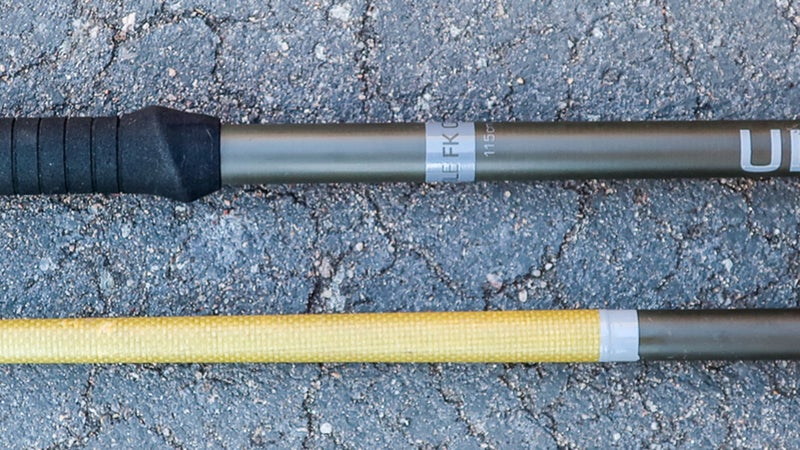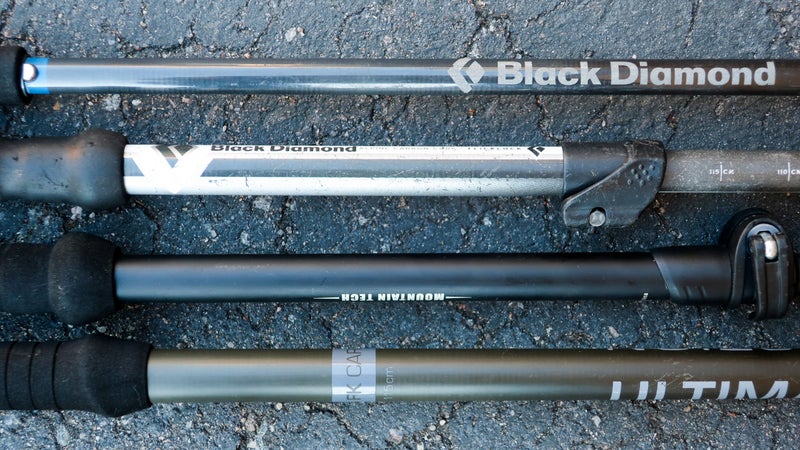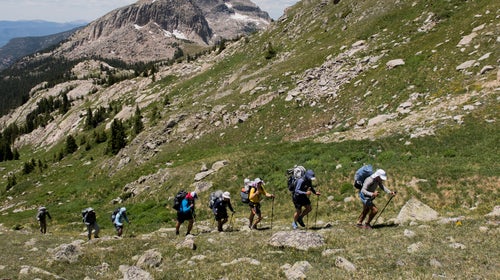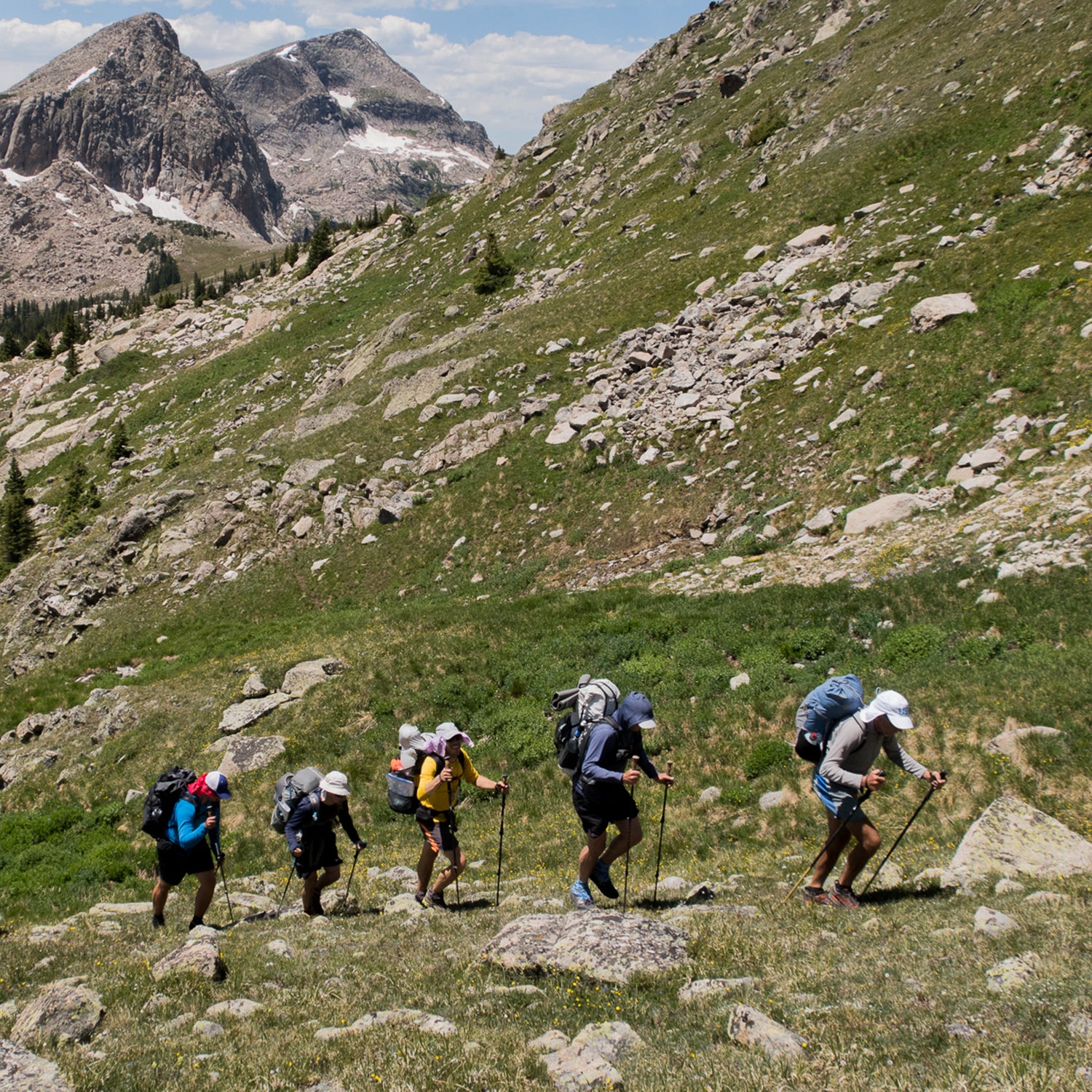For two weeks last summer I used the while guiding trips on the in ColoradoÔÇÖs Rocky Mountain National Park. The FK Poles were new for spring 2018 and are part of an adventure-oriented collection that also includes the FK Tarp, FK Bivy, and FK Gaiters. FK is short for ÔÇťfastest known,ÔÇŁ as in fastest known time,┬áwhich is suggestive of the design ethosÔÇöan emphasis on performance and weight, not necessarily comfort or convenience.
Review: Ultimate Direction FK Trekking Poles
The feature a single-piece shaft, foam grips (with extensions), woven nylon wrist straps, and carbide tips. Their length cannot be adjusted, and they do not collapse.
The FK Poles are stronger and stiffer than any trekking or ski pole that I have ever used, while also being among the lightestÔÇöjust 3.7 ounces for my size, 115 centimeters┬á. They are an absolute joy to use.
However, because they cannot be adjusted or collapsed, these poles have limitations. They donÔÇÖt stow away well on flights, so they are best for local trips without extensive scrambling,┬áand they are not compatible with many trekking-pole-supported shelters without additional pole jacks.
I found just one flaw with my preproduction FK PolesÔÇöthe tips quickly wore out. But that was reportedly addressed before full production.
Product Specs
- 4 oz per pole (for the 115-centimeter length)
- Single-piece, fixed-length carbon-fiber shaft
- Aramid-wrapped lower shaft for abrasion resistance
- EVA foam grip with extensions
- Woven nylon wrist strap
- Available from 110-centimeter to 135-centimeter lengths (in 5-centimeter increments)
- $150

Strength and Stiffness
All things being equal:
- Carbon-fiber shafts are stronger and stiffer than aluminum shafts.
- One-piece shafts are stronger and stiffer than multipiece shafts.
So in terms of strength and stiffness, the FK Poles already have two things going for them: theyÔÇÖre made of carbon fiber, and theyÔÇÖre one piece.
But with the FK Poles, thereÔÇÖs a third ingredient at play, too: the shafts are oversize. The maximum diameter of these poles, at the top of the shaft,┬áis 20 millimeters, which is:
- An 11 percent increase versus standard 18-millimeter shafts, like those on the ($170, 7.5 ounces) and the  ($30, 7 ounces)
- A 48 percent increase versus 13.5-millimeter shafts, like those on the ($170, 5 ounces for 120 centimeters).
By increasing the shaft diameter, pole strength and stiffness both increase exponentially. If youÔÇÖre a physicist or an engineer, please chime in on the accuracy of Ultimate DirectionÔÇÖs claim: ÔÇťIncreasing the diameter doesnÔÇÖt just increase the strength proportionally, it squares the strength┬áand cubes the increase in stiffness!ÔÇŁ
The FK Pole is so strong and stiff that it almost feels like another material. IÔÇÖve been using carbon-fiber poles for 15 years, and these feel utterly different.

Competition
- ░Ň│ˇ▒╠ř ($150, 5.5 oz for 115 centimeters)┬áis the most similar, with long foam grips and carbide tips┬ábut narrower shafts.
- ░Ň│ˇ▒╠ř ($60, 6.6 oz for 115 centimeters) is┬áidentical to the Carbon 1 but has┬áaluminum shafts.
- ░Ň│ˇ▒╠ř (3.1 oz for 115 centimeters) is┬ávery light┬ábut thin shafted and relatively wobbly.
- ░Ň│ˇ▒╠ř ($160, 5┬áoz for 120 centimeters) has┬ánordic-style grips and 16-millimeter┬áshafts.
Inherent Limitations
Adjustable poles outsell fixed-length poles by leaps and bounds. If you buy the FK Poles, youÔÇÖll learn why. They:
- DonÔÇÖt travel well;
- Stick out of the backpack about two feet when stowed, making them unwieldy when scrambling or bushwhacking;
- Are incompatible with many many trekking-pole-supported shelters;
- Break catastrophically, with no opportunity to completely repair them by simply replacing a broken segment;
- Cannot be adjusted for different terrain types (e.g., extending them on steep downhills), outdoor activities (e.g., trekking and alpine touring), or users (e.g., you and your significant other).
Only one of these issues can easily be addressed. If your shelter height isnÔÇÖt compatible, you can bring pole jacks or extensions made of aluminum or carbon-fiber tubing.
Room for Improvement
I found only one flaw with the FK Poles: the carbide tips. Ultimate Direction told me that these tips have since been improved between my sample pole and the product models.
The specific problems were:
- The carbide pieces unscrewed with use, putting them at risk of falling out completely. My solution was to superglue them in place permanently.
- The tips wore down quickly, requiring premature replacement.

If you do need to replace trekking-pole tips,  and use the , because they will have little effect on the height of the FK Poles. 


